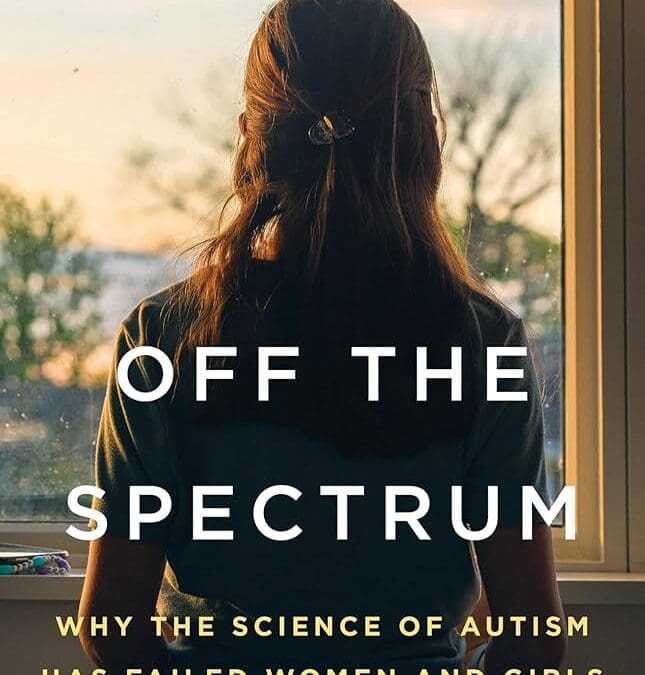
The Norwegian Route Out of Tradwife Hell
April 1, 2025
Thyme for some healing soup recipes from around the world
April 1, 2025Excerpted from Off the Spectrum: Why the Science of Autism Has Failed Women and Girls by Gina Rippon. Copyright © 2025. Available from Seal Press, an imprint of Hachette Book Group, Inc.
In her foreword to the book Girls and Autism: Educational, Family and Personal Perspectives, Sophie Walker, founding leader of the Women’s Equality Party, U.K., writes of the struggles her autistic daughter, Grace, has in getting by in a world that does not see her, of the ‘double discrimination’ of being both female and autistic. She quotes Grace’s own summary of what this entails:
All girls are under immense pressure to fit in and to be a certain way according to what they are told being a girl means. It’s even worse for girls with autism because they are also trying to fit in with what being a human means.
In order to understand how brains get to be different, we need to pay attention to what is going in the world outside those brains. We now know that our brains can change throughout our lives as a result of the different experiences we have, the different attitudes we encounter, the different lives we lead. There is definitely some kind of biological script behind the production of a human brain, but the social stage on which it appears has a powerful part to play in shaping its owner’s successes (and failures).
My insistence that the centuries-old ‘blame the brain’ mantra needs to acknowledge the role of the outside world in contemporary explanations of sex and gender differences in that world has got me involved in many, many discussions about gender gaps in all sorts of organizations and the extent to which we should look at the brain-changing effects of the outside world in order to understand where these gaps come from and what we might do about them. It strikes me that we could think of the apparent preponderance of males in the autistic world as a rather bizarre sort of gender gap. And that, in order to understand this gender gap, as well as looking at the brains and behavior of autistic individuals, we should also look outside, at the world that seems to impact the owners of such brains so differently and from which they so often feel excluded.
This complex question about the interaction between autism and our world brings us to camouflaging. We know that the majority of autistic camouflagers are female. We also know that the process of camouflaging appears to have a very detrimental effect on many, if not most, of these camouflagers. And yet they persist.
We now know that the passive, shy façade might well be disguising potent levels of distress.
The reason for this is often described as some kind of survival mechanism, a wish to avoid being stigmatized and othered. It is not only autistic females who experience such unpleasantness in their world, but it is, on the whole, more likely to be autistic females who are driven into hiding. So, as well as exploring the ‘how’ and the ‘who’ of camouflaging, we should look to the role of gender in explaining the ‘why’. And that should include why it is more common in females—is camouflaging linked to some sex-based mechanism that prioritizes ‘belongingness’? Or could such a mechanism be acquired, given the pressures and socialization that women and girls face?
Back to the brain-imaging community to find ways of asking such questions—perhaps to make up for those missing female datasets in the early years of autism research!
In discussions of autism’s gender gap, there have often been references to gendered differences in socialization, speculating that a greater emphasis on social niceties—on compliance and conformity—produced the ‘quieter’ form of autism allegedly more characteristic of autistic females. So much quieter, indeed, that it often fails to register as autism at all. We now know that the passive, shy façade might well be disguising potent levels of distress. And being on the lookout for this particular ‘good girls don’t’ stereotype in our gendered world might mean that all those autistic girls and women, all those ‘Alices,’ all those Chameleons, are spotted earlier.
More and more, society is waking up to how gender stereotyping can negatively impact us all, particularly in the early years. Energetic initiatives are urging all those involved, from teachers to marketing gurus to policymakers, to tackle the issues around the limitations imposed by gendered expectations. We should add the story of female autism to this list, to give powerful examples of how a world’s expectations can drive vulnerable groups underground, to suffer unnoticed.
If we are going to work towards solving this two-way communication problem, then all of us—teachers, researchers, clinicians, autism advocates and the wider public—need to get the full picture of what it is to be autistic. Neurotypical people such as myself need to hear about the lived experiences of people such as Alice, from their side of the looking glass, so we can see their world through their eyes rather than only ours. We must find the flaws that have allowed us to lose sight of these lost girls, we must challenge the fuzzy and imprecise diagnoses, and we must confront the gender stereotypes that are distorting our quest for answers in the world of autism. Maybe we can (gently) deconstruct the elaborate camouflages that have allowed autistic girls to ‘fly beneath the radar,’ to ‘hide in plain sight.’ We must listen to these lost girls so that autism researchers, autism therapists, autism advocates, and the wider general population will have a much clearer idea of what we should be looking for, what we need to explain, so that we can better understand the autistic world.
From the other side of the looking glass, by understanding female autism, we could learn about ourselves, about the human race’s overpowering desire to belong. We can unpick the intricacies of the social scripts that fulfil this need—invisible to us, but painstakingly detected by our autistic sisters. We could listen to what they have to say and realize how many different ways there are of experiencing our world. We could also understand the need to be other-aware as well as self-aware, and realize the hugely negative impact of stigmatizing and ostracizing individuals who don’t fit into our one-size-fits-all expectations.
We have explored the many reasons why girls and women have been missing in the history of autism, and why it matters. We have found our way behind their masks and spotted their differently different autistic behavior. We have finally welcomed them into our scanners and mapped their differently different brains. Hopefully we can now make the world a better place for them.
Great Job Gina Rippon & the Team @ Ms. Magazine Source link for sharing this story.







